Goth Fashion Style is a unique blend of dark aesthetics, romanticism, and rebellion, offering a powerful form of self-expression. At mens-fashion.net, we help you explore the multifaceted world of goth fashion for men, providing insights on how to embrace this style authentically. You’ll discover the various subgenres within goth fashion and learn how to incorporate them into your wardrobe. From clothing to accessories, makeup to hairstyles, we provide you with a fashion guide that will help you develop a signature goth look that reflects your personality.
1. Understanding the Essence of Goth Fashion Style
Goth fashion style is more than just wearing black; it’s about embracing a certain attitude and aesthetic. According to the Fashion Institute of Technology (FIT), the goth subculture originated in the late 1970s and early 1980s in the United Kingdom, growing out of the post-punk scene.
1.1 Origins and Influences
The roots of goth fashion lie in the music scene, with bands like Bauhaus, The Sisters of Mercy, and Siouxsie and the Banshees influencing the early goth look. The style incorporates elements of Victorian fashion, punk, and even Renaissance influences.
**1.2 Key Elements of Goth Fashion Style
- Dark Colors: Predominantly black clothing is a staple, often paired with dark shades of purple, red, or green.
- Fabrics: Velvet, lace, leather, and fishnet are commonly used to create texture and depth.
- Silhouettes: Fitted corsets, flowing skirts, and tailored jackets are popular choices.
- Accessories: Silver jewelry, especially with gothic motifs like bats, skulls, and crosses, is essential.
- Makeup: Pale skin, dark eye makeup, and deep lip colors are characteristic.
1.3 Who is Goth Fashion Style For?
| Category | Details |
|---|---|
| Gender | Predominantly male (90-10%) |
| Age | 18 – 55 years old |
| Occupations | Students, office workers, creatives, entrepreneurs |
| Income Level | Middle to High |
| Marital Status | Diverse |
| Location | USA, especially fashion-forward cities like Los Angeles |
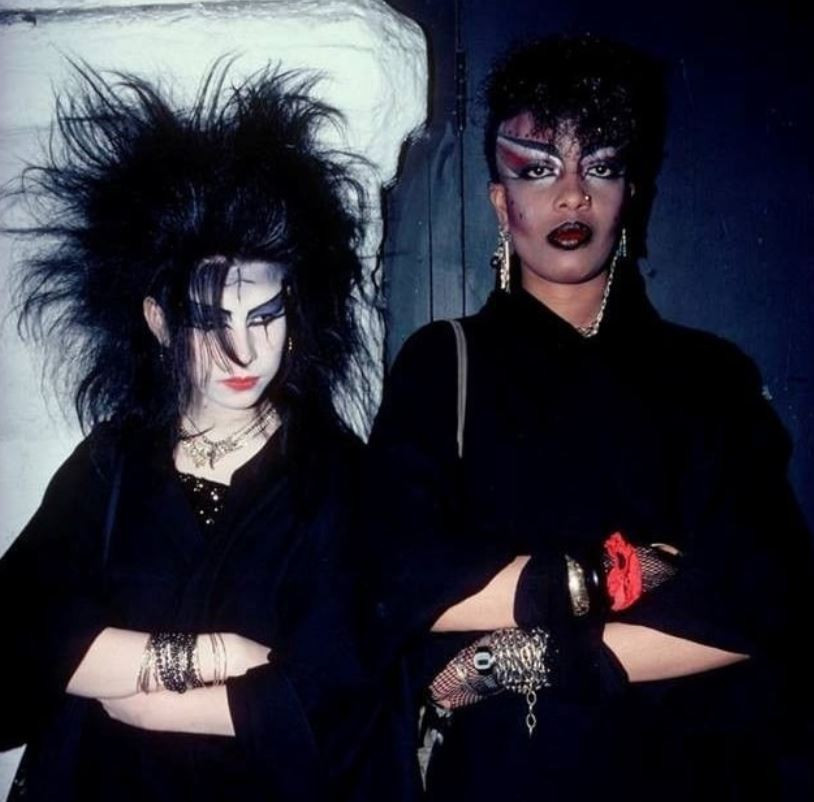
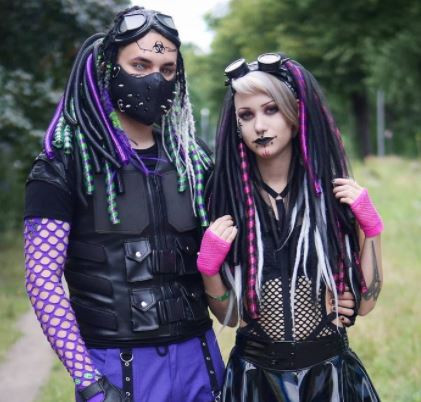






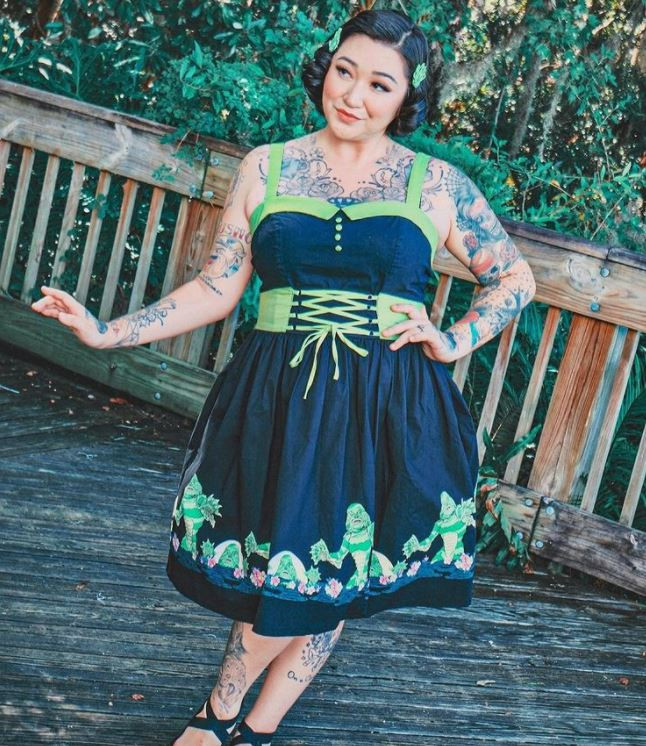
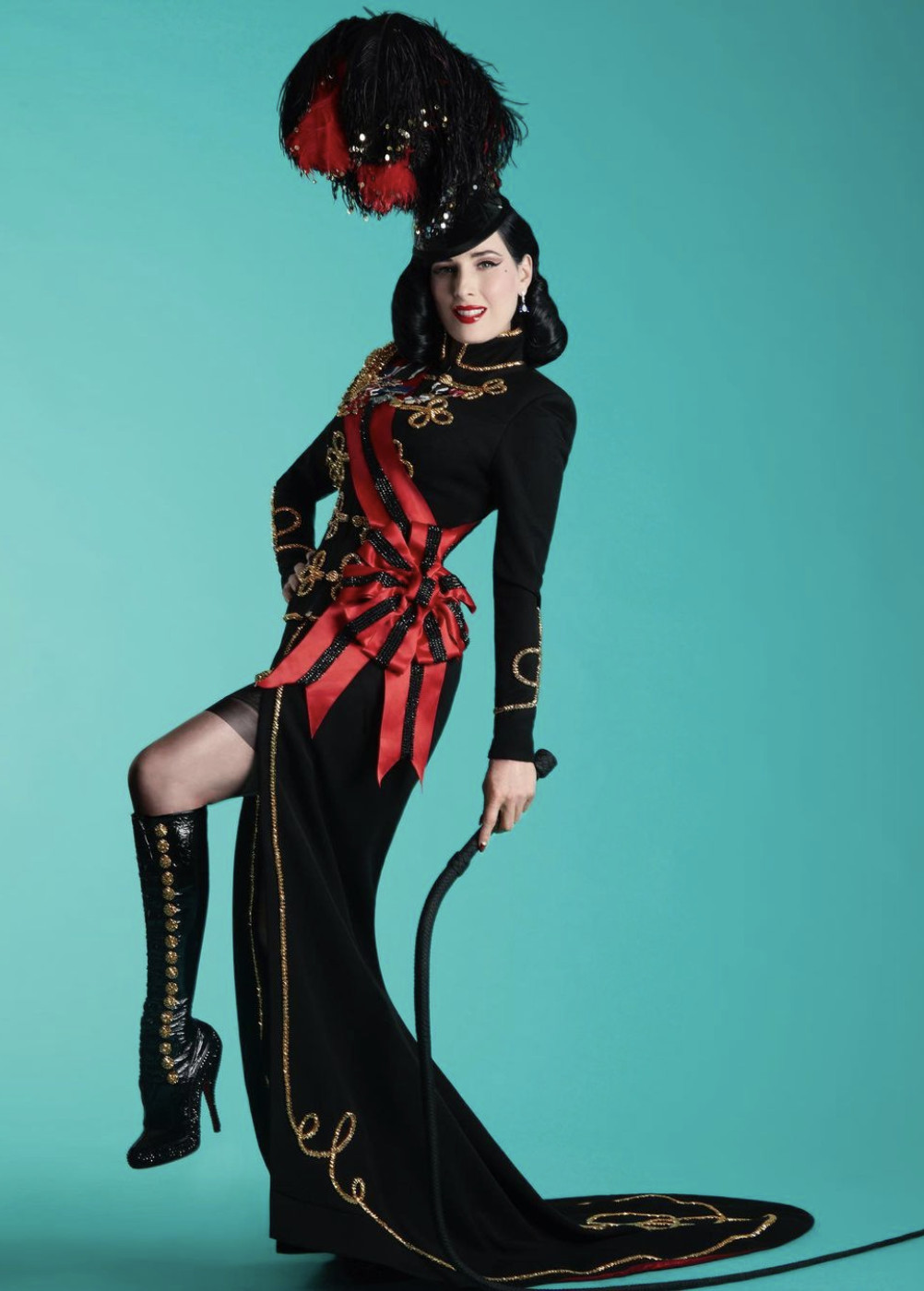
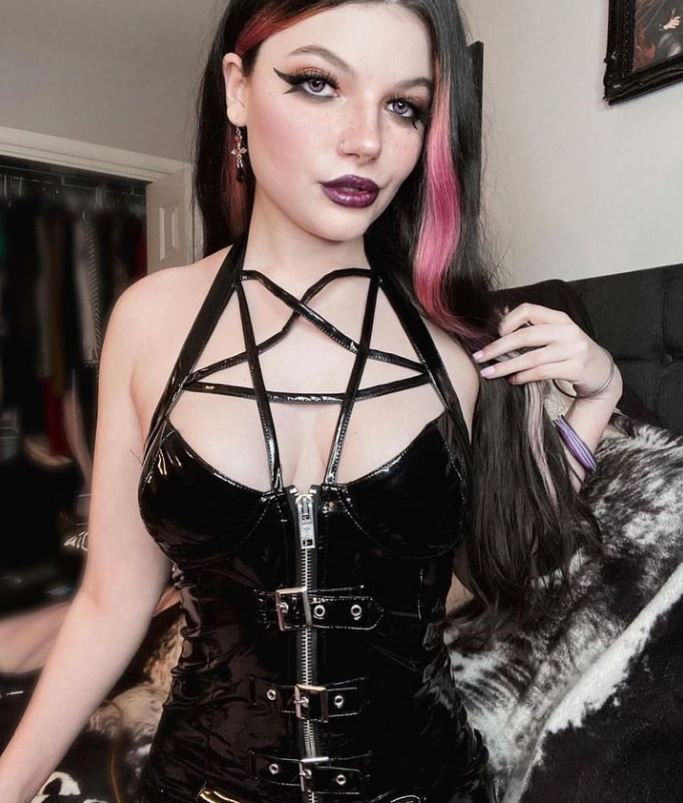
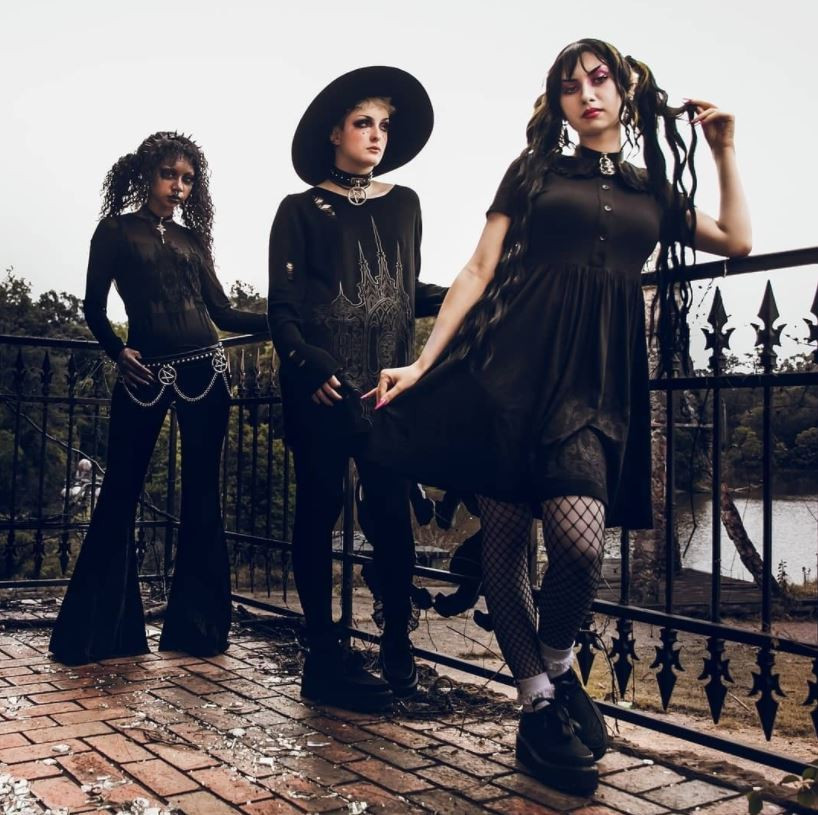
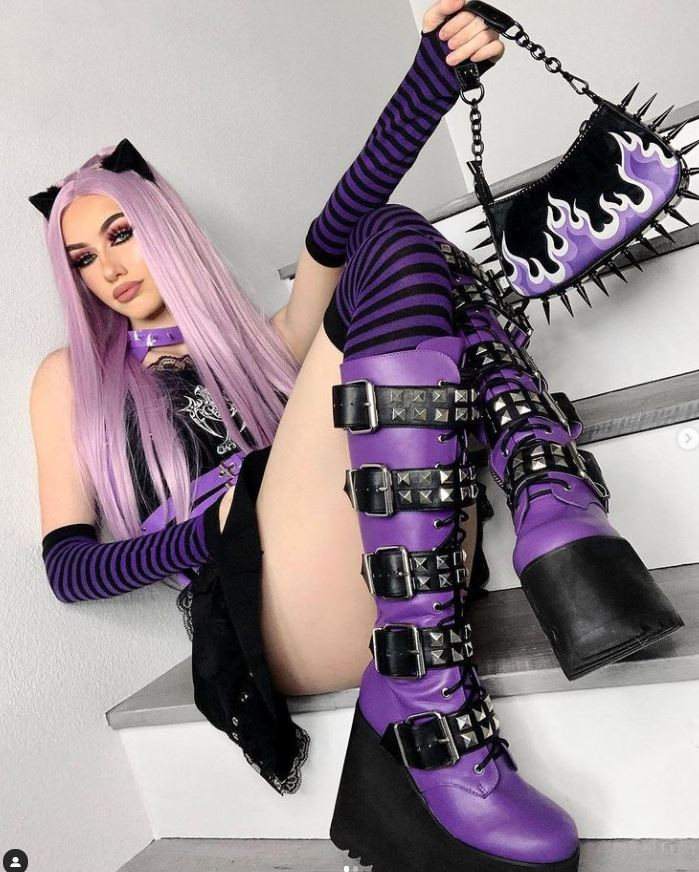
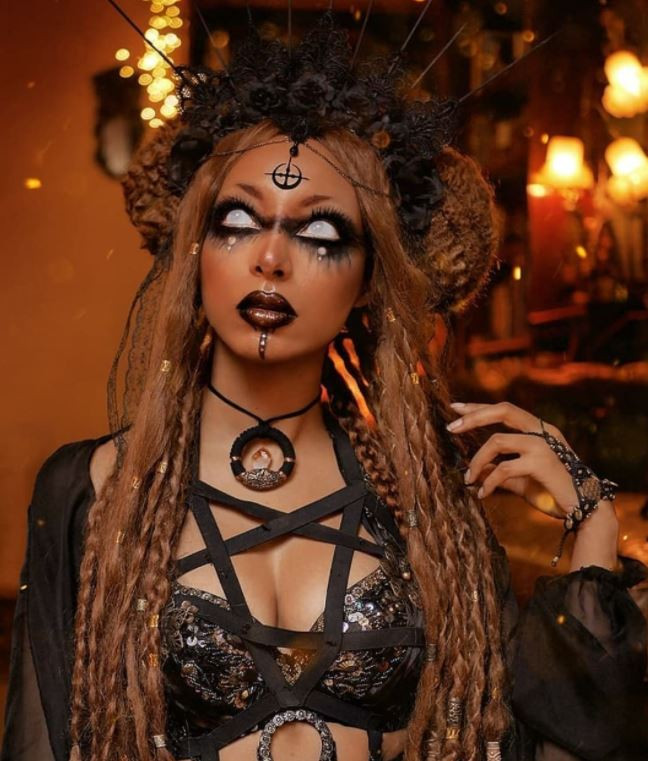
2. Delving into the Subgenres of Goth Fashion Style
Goth fashion isn’t monolithic; it encompasses a wide range of subgenres, each with its unique characteristics. Exploring these subgenres can help you find the perfect style that resonates with you.
2.1 Trad Goth
Also known as traditional goth, this style harks back to the original 1980s goths. According to @deathrockfashion on Instagram, it features dramatic black and white makeup, teased hair, and layered dark clothing.
- Makeup: Heavy emphasis on stark contrasts, often extending eye makeup towards the temples.
- Clothing: Layered, covering attire, often with a vintage or handmade feel.
- Hair: Teased, voluminous, and sometimes styled into a mullet.
2.2 Deathrock
Deathrock is a subgenre that merges punk and goth elements. The Instagram account @thisismybatcave showcases how deathrockers typically sport more punk-inspired makeup while dressing primarily in black.
- Hair: Shaved heads or mohawks are common.
- Clothing: Ripped clothing, fishnets, and DIY attire with spooky themes.
- Makeup: Similar to trad goth but with a punk edge.
Modern punk fashion with emphasis on hairstyle, makeup, and accessories.
2.3 Cybergoth
Cybergoth combines goth aesthetics with cyberpunk and industrial elements. According to @mino_cyberbat on Instagram, this style is often associated with the industrial rave scene.
- Colors: Bright neon colors paired with black.
- Themes: Technological motifs such as cyborgs, circuit boards, toxic waste, and poison.
- Accessories: Cyberlocks (plastic dreadlocks), ravewear, and light-up accessories.
2.4 Medieval Goth
Medieval goth incorporates historical and mythological imagery such as churches, castles, and dragons. As showcased by @manicmoth on Instagram, this style often combines long skirts, corsets, and blouses with dark aesthetics.
- Themes: Medieval and historical elements with gothic undertones.
- Clothing: Long skirts, corsets, and blouses in dark colors.
- Variations: Fairy Goth (whimsical, fantasy approach) and Vampire Goth (sleek, sexy look focused on cursed and holy imagery).
2.5 Victorian Goth
Victorian goth focuses on period wear from the Victorian era. According to @gothicnation on Instagram, this style often includes vests, bustles, and bustiers.
- Clothing: Period-accurate Victorian attire in dark colors.
- Hair: Often non-dyed to maintain historical accuracy.
- Accessories: Victorian-era jewelry and accessories.
2.6 Romantic Goth
Romantic goth is similar to Victorian goth but emphasizes the Romantic Era. As showcased by @xixifroufrou on Instagram, this style includes belle sleeves, lace, high necks, and long, flowing skirts.
- Themes: Romantic imagery found in poetry, such as roses, ravens, and cemeteries.
- Clothing: Belle sleeves, lace, high necks, and long, layered skirts.
- Focus: Art, poetry, solitude, and creativity.
2.7 Gothic Lolita
Gothic Lolita originated in Japan, combining cute Lolita styles with dark colors and spooky themes. According to @gothic.and.lolita on Instagram, this style features doll-like clothing with ruffles and puffy sleeves.
- Clothing: Doll-like dresses with ruffles, puffy sleeves, and gathers.
- Accessories: Aprons, gloves, and stockings for a refined yet cute look.
- Influence: Strong influence in Japan.
2.8 Mall Goth
Mall goths, often seen in the early 2000s, frequent malls and stores like Hot Topic. As showcased by @V.for.ven on Instagram, their fashion resembles early 2000s styles with a darker, punkier twist.
- Clothing: Low-waisted bottoms, miniskirts, colored plaid, and cargo pants.
- Influences: Avril Lavigne and early 2000s punk styles.
- Accessories: Arm warmers and characters like Hello Kitty.
2.9 Glam Goth
Glam goth takes inspiration from glam rock artists like David Bowie, featuring deep v-necks, teased hair, leather, and fur. As showcased by @V.for.ven on Instagram, this style has a theatrical, costume-like feel.
- Inspiration: Glam rock and theatrical costumes.
- Clothing: Deep v-necks, leather, fur, and feathers.
- Elements: Animal prints, sequins, and colored leather.
2.10 Gothabilly/Pin-Up Goth
Gothabilly combines 1950s-style dresses with dark colors and retro, creepy prints. According to @hottopic on Instagram, this style often maintains a simplistic look with retro makeup and kitten heels.
- Inspiration: 1950s fashion and retro aesthetics.
- Clothing: Calf-length dresses with petticoats, halter tops, and high-waisted bottoms.
- Footwear: Kitten heels or pumps.
2.11 Burlesque/Cabaret Goth
Burlesque goth is an offshoot of Victorian goth with a theatrical stage look. High fashion model Dita Von Teese, showcased on Instagram as @ditavonteese, exemplifies this style with lingerie, corsets, and silk robes.
- Inspiration: Theatrical stage looks and carnival aesthetics.
- Clothing: Lingerie, corsets, silk, and robes.
- Focus: Provocative and sensual elements.
2.12 Fetish Goth
Fetish goth merges goth aesthetics with BDSM culture. According to Barsinister on Instagram, this style includes leather, latex, corseting, and collars.
- Clothing: Leather, latex, corsets, and collars.
- Elements: BDSM-inspired accessories.
- Note: These items can be worn for aesthetic reasons rather than sexual ones.
2.13 Nu-Goth
Nu-goth is a modern, casual version of goth that uses black and dark-colored versions of everyday styles. KillStar on Instagram showcases how this style is inspired by anti-fashion and minimalist designs while still paying homage to older goth traditions.
- Style: Casual, sleek, and minimalist.
- Colors: Black and dark colors.
- Themes: Occult and celestial themes.
2.14 Pastel Goth
Pastel goth combines gothic styles with bright, pastel colors. DollSkill on Instagram showcases how this style relies on heavy accessories such as chokers and beaded bracelets.
- Colors: Gothic styles paired with pastel colors.
- Accessories: Heavy use of chokers, beaded bracelets, and plastic hair clips.
- Themes: Babydoll and cartoon themes.
2.15 Witch Goth/Wiccan/Pagan
Witch goth developed from belief systems revolving around astrology and witchcraft. According to WitchGoth on Instagram, this style features witchy and celestial themes with wide-brimmed hats, bell sleeves, and crystal jewelry.
- Inspiration: Astrology, witchcraft, and pagan beliefs.
- Clothing: Wide-brimmed hats and bell sleeves.
- Accessories: Sigils drawn on the skin, forehead decorations, and crystal jewelry.
3. Essential Wardrobe Pieces for Goth Men
Building a goth wardrobe involves curating specific pieces that reflect the chosen subgenre and personal style. Here are some essential items:
3.1 Clothing
- Tops: Black button-down shirts, band tees, velvet vests, and lace-trimmed blouses.
- Bottoms: Skinny jeans, tailored trousers, long skirts (for some subgenres), and leather pants.
- Outerwear: Trench coats, leather jackets, velvet blazers, and capes.
- Dresses/Robes: Long, flowing robes or Victorian-style coats for a dramatic effect.
3.2 Accessories
- Jewelry: Silver pendants with gothic motifs, rings, bracelets, and chokers.
- Belts: Studded belts, corset belts, and leather belts with ornate buckles.
- Hats: Wide-brimmed hats, top hats, and hooded cloaks.
- Gloves: Lace gloves, leather gloves, and fingerless gloves.
- Footwear: Combat boots, platform boots, Victorian-style boots, and creepers.
3.3 Makeup and Grooming
- Face: Pale foundation, dark eyeshadow, eyeliner, and lipstick.
- Hair: Darkly dyed hair (black, dark red, or purple), styled in voluminous or sleek ways.
- Nails: Black nail polish.
4. Styling Tips for Men’s Goth Fashion
Mastering goth fashion is all about the details. Here are some tips to elevate your goth style:
4.1 Layering
Layering is key to creating depth and visual interest in goth outfits. Combine different textures and lengths to achieve a unique look.
4.2 Mixing Fabrics
Experiment with different fabrics like velvet, lace, leather, and cotton to add complexity to your outfits.
4.3 Accessorizing
Accessories are crucial for completing a goth look. Choose pieces that reflect your chosen subgenre and personal style.
4.4 Incorporating DIY Elements
DIY elements can add a personal touch to your goth outfits. Consider adding patches, studs, or rips to your clothing.
4.5 Staying True to Yourself
The most important aspect of goth fashion is staying true to yourself. Choose pieces and styles that make you feel confident and comfortable.
5. Finding Inspiration and Resources
To further explore and refine your goth style, here are some valuable resources:
5.1 Online Communities
Join online forums, social media groups, and online communities to connect with other goth enthusiasts and share ideas.
5.2 Fashion Blogs and Magazines
Follow fashion blogs and magazines that focus on alternative styles, such as mens-fashion.net, to stay updated on the latest trends.
5.3 Influencers
Follow goth fashion influencers on social media for inspiration and styling tips.
5.4 Music and Art
Draw inspiration from goth music, art, and literature to deepen your understanding and appreciation of the subculture.
6. Where to Shop for Goth Fashion
Finding the right pieces for your goth wardrobe can be an adventure. Here are some recommended shopping destinations:
6.1 Online Retailers
-
Etsy: A great source for unique, handmade goth clothing and accessories.
-
Amazon: Offers a wide variety of goth fashion items at different price points.
-
ThredUp: Perfect for thrifting great-condition goth clothes.
-
Gthic: Excellent collection of goth clothing and accessories.
6.2 Specialty Stores
-
Hot Topic: A popular destination for mall goth and alternative styles.
-
Killstar: Offers a wide range of nu-goth clothing and accessories.
6.3 Thrift Stores
Thrift stores can be a great resource for finding vintage and unique goth clothing items at affordable prices.
7. Goth Fashion Style and Pop Culture
Goth fashion is not just a street style; it has significantly influenced various aspects of pop culture, including film, music, and literature.
7.1 Influence on Film
Goth aesthetics have played a vital role in shaping the visual landscape of numerous films, particularly in the horror and fantasy genres. Films like “The Crow,” “Interview with the Vampire,” and Tim Burton’s works such as “Beetlejuice” and “Edward Scissorhands” have prominently featured goth-inspired costumes and set designs, enhancing their dark and mysterious atmospheres.
7.2 Influence on Music
The goth subculture is intrinsically linked to the music scene, with bands such as Bauhaus, The Sisters of Mercy, and Siouxsie and the Banshees serving as pioneers of the genre. These musical acts have not only defined the sonic characteristics of goth music but also its visual identity, influencing fashion trends among their fan base.
7.3 Influence on Literature
Gothic literature has long been a source of inspiration for goth fashion, with classic works such as “Dracula,” “Frankenstein,” and Edgar Allan Poe’s poems contributing to the dark and romantic themes prevalent in goth aesthetics. Characters and settings from these literary masterpieces have inspired countless goth fashion designs and trends.
8. Maintaining Authenticity in Goth Fashion Style
Authenticity is key when embracing goth fashion. Avoid simply copying trends and instead focus on developing a personal style that reflects your individuality and values.
8.1 Understanding the Subculture
Take the time to learn about the history and values of the goth subculture. This will help you avoid cultural appropriation and create a more meaningful and authentic goth style.
8.2 Avoiding Stereotypes
Be mindful of stereotypes and clichés associated with goth fashion. Instead of simply adopting a pre-packaged look, experiment with different styles and elements to create something unique.
8.3 Expressing Yourself
Use goth fashion as a means of self-expression. Choose pieces and styles that resonate with you and reflect your personality and interests.
9. Practical Fashion Advice
Practical advice to help you integrate goth fashion into your daily wardrobe.
9.1 Accessorize Smartly
Goth fashion is all about the accessories. Start with key pieces such as studded belts, silver jewelry (rings, necklaces with gothic motifs), and unique hats like wide-brimmed hats or top hats. These can transform an ordinary outfit into a goth-inspired look.
9.2 Start With a Black Base
Black is the cornerstone of goth fashion. Begin with a solid black outfit—such as black skinny jeans and a black band tee—and then build upon it. This makes it easier to incorporate more daring elements gradually.
9.3 Mix Textures
To add depth to your all-black ensembles, experiment with textures. Combine leather, velvet, lace, and fishnet to create visual interest. For example, pair a leather jacket with a velvet top or wear a lace blouse under a structured blazer.
9.4 Consider Makeup and Hairstyling
Makeup and hair are essential components of goth fashion. Pale foundation, dark eyeshadow, heavy eyeliner, and dark lipstick can significantly enhance your look. For hair, consider dyeing it black or a dark shade of red or purple, and style it in voluminous or sleek ways depending on your preference.
9.5 Footwear Choices
Footwear can make or break a goth outfit. Invest in a good pair of combat boots or platform boots, which are versatile and can be worn with various styles. Victorian-style boots or creepers are also great options for a more unique look.
9.6 DIY Customization
One of the best ways to make your goth style unique is through DIY customization. Add patches, studs, or rips to your clothing. This not only personalizes your wardrobe but also aligns with the punk influences often found in goth subcultures.
10. Frequently Asked Questions (FAQs) About Goth Fashion Style
10.1 What is goth fashion style?
Goth fashion is a subculture style characterized by dark aesthetics, romanticism, and rebellion. It incorporates elements of Victorian fashion, punk, and Renaissance influences.
10.2 What are the key elements of goth fashion?
Key elements include dark colors (primarily black), velvet, lace, leather, silver jewelry with gothic motifs, pale skin, and dark makeup.
10.3 How do I choose the right goth subgenre for me?
Explore the different subgenres (Trad Goth, Deathrock, Cybergoth, etc.) and choose the one that resonates most with your personality, interests, and values.
10.4 What are some essential wardrobe pieces for goth men?
Essential pieces include black button-down shirts, band tees, velvet vests, skinny jeans, leather pants, trench coats, combat boots, and silver jewelry.
10.5 How can I style a goth outfit?
Use layering, mix different fabrics, accessorize thoughtfully, incorporate DIY elements, and stay true to your personal style.
10.6 Where can I find inspiration for goth fashion?
Look to online communities, fashion blogs, magazines, influencers, music, and art for inspiration.
10.7 Where can I shop for goth fashion?
Shop online retailers like Etsy, Amazon, and specialty stores like Hot Topic and Killstar. Thrift stores can also be a great resource.
10.8 How can I maintain authenticity in my goth style?
Understand the subculture, avoid stereotypes, and express yourself through your clothing choices.
10.9 Can goth fashion be incorporated into everyday wear?
Yes, you can incorporate goth elements into your everyday style by choosing versatile pieces and accessorizing thoughtfully.
10.10 Is goth fashion only for certain age groups or genders?
No, goth fashion is for anyone who appreciates the aesthetics and values of the subculture, regardless of age or gender.
Embracing goth fashion style is a journey of self-discovery and creative expression. At mens-fashion.net, we encourage you to explore the various facets of this unique subculture and develop a style that truly reflects your personality.
Ready to dive deeper into the world of goth fashion? Visit mens-fashion.net for more articles, styling tips, and inspiration.
Address: 227 W 27th St, New York, NY 10001, United States
Phone: +1 (212) 217-5800
Website: mens-fashion.net